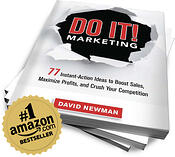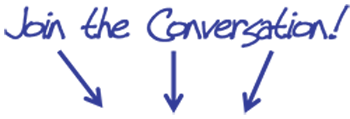 Buyers who lie should be deeply ashamed.
Buyers who lie should be deeply ashamed.
Salespeople and marketers have a bad rep for lying and deception but in my experience (both in my own speaking and consulting practice and via the hundreds of other consultants, entrepreneurs and independent professionals who tell me THEIR horror stories), PROSPECTS are much, much worse liars.
Somehow (for buyers) they think it's perfectly OK.
In reality, it's an unconscionable breach of professionalism.
For me personally, this has become VERY unusual because I've learned to be relentless in nailing down commitments.
Except once in a while, a buyer totally blindsides me. This is the story of how that happened and how YOU can avoid it happening to YOU.
You will also get my voicemail and email templates and scripts to circle back with elusive "closed" prospects multiple times.
Back story: 3 questions to lock in commitment
This prospect (an association executive director) gave me a verbal agreement to hire me over the phone - as in answering point blank my questions:
- "So are you still looking at other options or are we closing this deal right now on the phone?"
- "Who else needs to sign off on this before we make it final?"
- "Are you sure that you're ready to sign the agreement?"
Answers were:
- "We're closing the deal right now"
- "Nobody else - I hire the speakers and my marketing person will be in touch with you to get everything we need for the website and the program book"
- "Yes we have a deal."
Within 30 minutes of hanging up the phone, I emailed her the agreement, the invoice and my "Welcome Kit" email.
This was followed by WEEKS of radio silence, unanswered emails, unanswered voice mails and then an email from her this morning which says, "We decided to go with a local California speaker"
In the rest of this post, you'll get my follow-up sequence which will make YOU money if you use it. So the good of the many outweighs the good of the few... or the one.
This is a classic case of "The operation was a success. Unfortunately, the patient died."
How to circle back with a "closed" sale with dignity
Here's my recommended timeline for you when you get a verbal YES commitment from a prospect (which should be as good as a signed agreement but let's face it - it's FAR from it!) and they disappear on you.
1. Phone call with prospect.
2. Ask qualifying/closing questions
3. Send agreement/invoice paperwork.
4. If they go radio silent, EMAIL #1 is 6-7 days later and you simply resend your original email with all attachments and this added note at the top:
Susie,
Just resending the below in case it got lost in the shuffle last week. Please confirm receipt because I want to make sure this lands safely in your hands. Thanks!
5. Follow-up phone message (either at the same time as the email or a day or two before or after):
Susie,
Just wanted to make sure our agreement landed safely in your email inbox. Please do give me a call back at xxx-xxx-xxxx just to confirm you received it. I'm looking forward to our work together.
6. If no response, Wave 2 comes 3-4 days after that and sounds like:
Susie,
We're both flying at 100mph. Please do get back to me with a quick reply and let me know if we're still a go as you indicated on the phone. If yes, we'll start preparations as soon as you return the paperwork. Looking forward to our collaboration.
7. Again, it's your preference whether you leave a 2nd voice mail message a few days before or after or simultaneous with the email above. Whichever you choose, the second voice mail sounds like:
Susie,
If you've had a change of heart about your decision, please let me know. If you'd like to discuss these arrangements, please let me know that too. Thank you in advance for your reply so I can plan around your event accordingly. Give me a ring when you get a moment at xxx-xxx-xxxx. Thank you, Susie and talk to you soon.
8. Next email is 2-3 days later and is simply a written version of the above "change of heart" voice mail message.
9. The final note is something like this:
Susie,
Circling back with you about next steps. Please let me know which of these multiple choice answers is most reflective of current reality (which I lose track of regularly!!)
a. I am swamped but still want to move ahead with what we agreed to
b. Our needs have changed and I want to discuss a different approach
c. The deal is off in spite of the verbal commitment I made
d. Hey Newman - drop dead and never darken my doorstep again. Buzz off!!
Thank you in advance for hitting reply with your quick answer.
10. In my particular case, my prospect at great long last sent me this note:
Hi David,
Thank you for following up. I apologize for the delay in responding. I didn't want to re-connect with you until we had resolved several critical, conference-related details.
We have decided to go with a local, Southern California keynote speaker for the XXXXX 2014 Conference in San Diego. Upon reflection, it makes better business sense for us to employ local resources whenever possible.
I truly appreciate your time spent discussing XXXX 2014 with me. Thank you, too, for your diligence in following up.
We will be back to the East Coast within the next few years, and we will touch base with you again.
Take care ~
Susie Liar, Liar, Pants on Fire Prospect [Not her real name]
11. I hate liars and lying. (I admit it - it's one of my hot buttons.) So this is the reply I sent. I've added the decoding in green for your benefit:
=====
Susie,
Totally understand. [Every email where I'm stunned and have no idea what planet the person is from starts with these 2 words. It's much nicer than "Are you freaking nuts?"]
Just one final question for you. [The old Columbo TV detective strategy]
Is your local speaker a better fit content-wise or just budget-wise? [Did you lie to me for money or for a better reason?]
If it's strictly a budget issue, I wish you had come back to me first because we could have worked out a travel-inclusive fee arrangement that would still be within your budget. [I'm a nice guy and was - and still am - willing to work with you despite the fact that you reneged on the deal after I verbally confirmed it with you THREE different times on the phone]
Is this worth revisiting since you and I had a confirmed verbal agreement to book the conference? [You should be ashamed for going back on your word without so much as a courtesy email or phone call to let me know the deal was falling apart and/or to ask for my help in saving it]
=====
What do YOU think? Please use the COMMENTS area below to share your advice, insights and recommendations on these ideas and join the conversation...

 My friend, Avish Parashar, just launched his "Speaking Expert" podcast and I was honored to be his first guest.
My friend, Avish Parashar, just launched his "Speaking Expert" podcast and I was honored to be his first guest.  p.s. We still have a few open seats for the Simple Marketing Success 10-Week Virtual Bootcamp experience that starts October 8, 2013. Let me know you're interested (email or call me 610.716.5984) and I'll forward you the application materials right away.
p.s. We still have a few open seats for the Simple Marketing Success 10-Week Virtual Bootcamp experience that starts October 8, 2013. Let me know you're interested (email or call me 610.716.5984) and I'll forward you the application materials right away. 

 Build the Tribe Before the Tent
Build the Tribe Before the Tent This is a much larger conversation
This is a much larger conversation
 There are only three problems that you, as a small business owner, entrepreneur or professional service provider, are ever going to be in a position to solve.
There are only three problems that you, as a small business owner, entrepreneur or professional service provider, are ever going to be in a position to solve.
 Many of my marketing mentor clients want to boost their online presence - in the words of my pal Henry DeVries, they want “more blogs, more buzz, and more business.”
Many of my marketing mentor clients want to boost their online presence - in the words of my pal Henry DeVries, they want “more blogs, more buzz, and more business.”
 I’ve quit.
I’ve quit.
 Buyers who lie should be deeply ashamed.
Buyers who lie should be deeply ashamed.
 Jay Baer’s Bio:
Jay Baer’s Bio: 
